To say I had a lightbulb moment recently while testing Ikea’s smart lights would be silly — so I won’t. But it was revelatory to learn there are perfectly capable smart lights for 25% less than the cost of Philips Hue. Ikea may not be known for smart lighting but maybe that should change.
Ikea delivers a solid smart lighting quartet: affordability, local control, excellent remotes and tons of lighting products to create innumerable combinations. Even if you don’t ultimately choose Ikea smart lights, they should be on your radar.
Ikea holds its own against other budget smart home brands
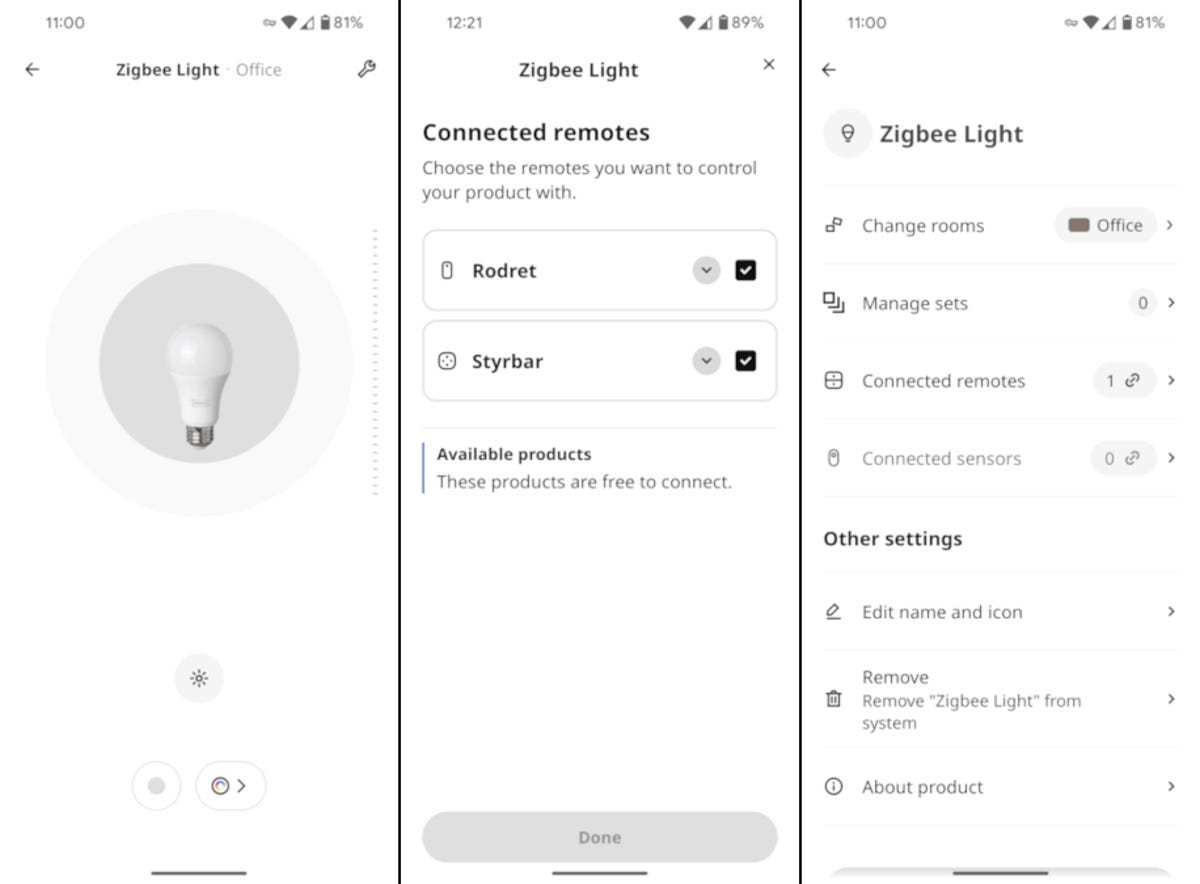
The Ikea Home Smart app’s simple design makes it easy to use.
My smart home philosophy has always been to buy cheap and reliable. There’s almost no point in buying a $200 smart light switch when you can get the same basic features for less than $30. The fancy software tricks of the pricier model amount to nothing when few people use them.
Ikea’s smart home offerings meet these requirements at prices that would make Philips Hue blush, particularly for remotes and sensors:
Ikea Smart Lights vs. Philips Hue
undefined
| Remote control | Motion sensor | Contact sensor |
|---|---|---|
| Ikea Styrbar ($14) | Ikea Vallhorn ($9) | Ikea Parasoll ($12) |
| Philips Hue Tap Switch Mini ($50) | Philips Hue Motion Sensor ($45) | Philips Hue Secure ($40) |
I won’t dig into the many smart lighting products from either brand. But I will note that Ikea has an edge on pricing while Hue’s selection is larger. The smart hubs for Ikea ($70) and Philips Hue ($60) offer similar features, but the price difference isn’t nearly as pronounced. Ikea’s sensor prices even beat most budget brands like Aqara, Sonoff and Thirdreality.
Ikea excels at local smart home controls
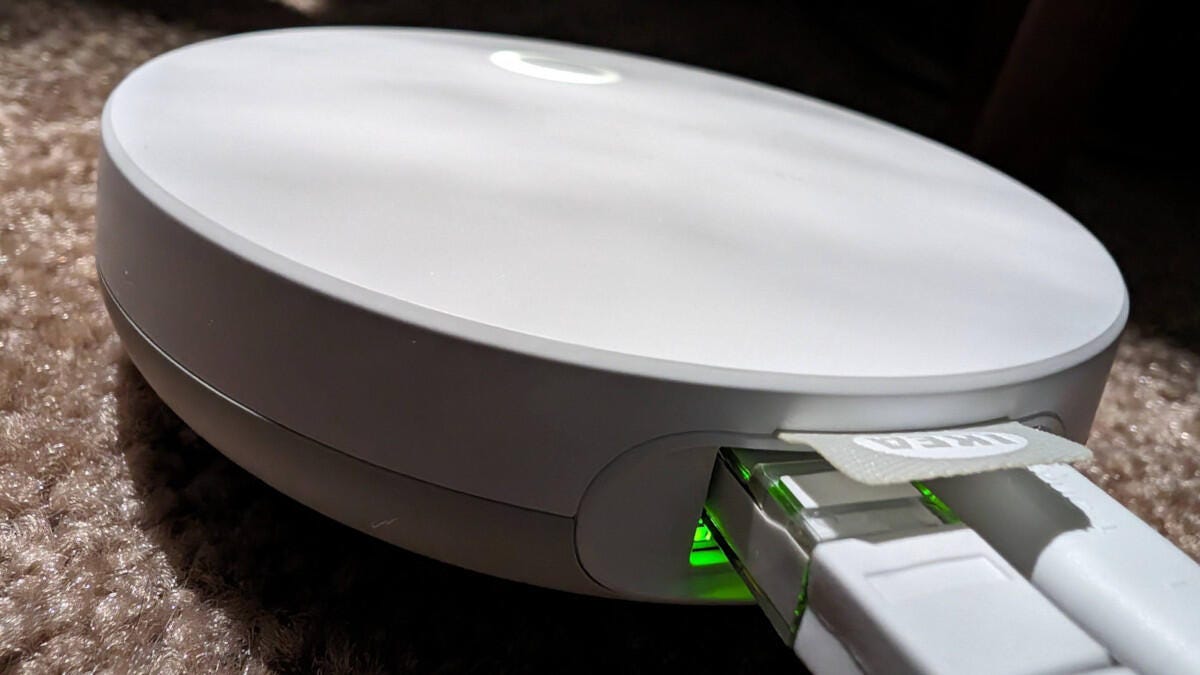
The Ikea Dirigera smart hub is a useful — but optional — part of an Ikea smart lighting system.
Ikea’s secret ingredient is that most of its smart lighting devices use the Zigbee smart home protocol, which means they can run without a Wi-Fi connection. Zigbee also enables linking up to 10 smart lights to a single Ikea remote (or sensor) without a hub. It’s perfect for beginners since you can always add a hub later for smart home controls like scheduling, remote access and automation.
Local control also extends to Ikea’s smart hub, Dirigera. It plugs into your router and lets anyone registered with the Ikea Home Smart app on your Wi-Fi network access the controls — even without an internet connection. It’s also possible to set up remote access via the internet, but that’s par for the course on a smart hub.
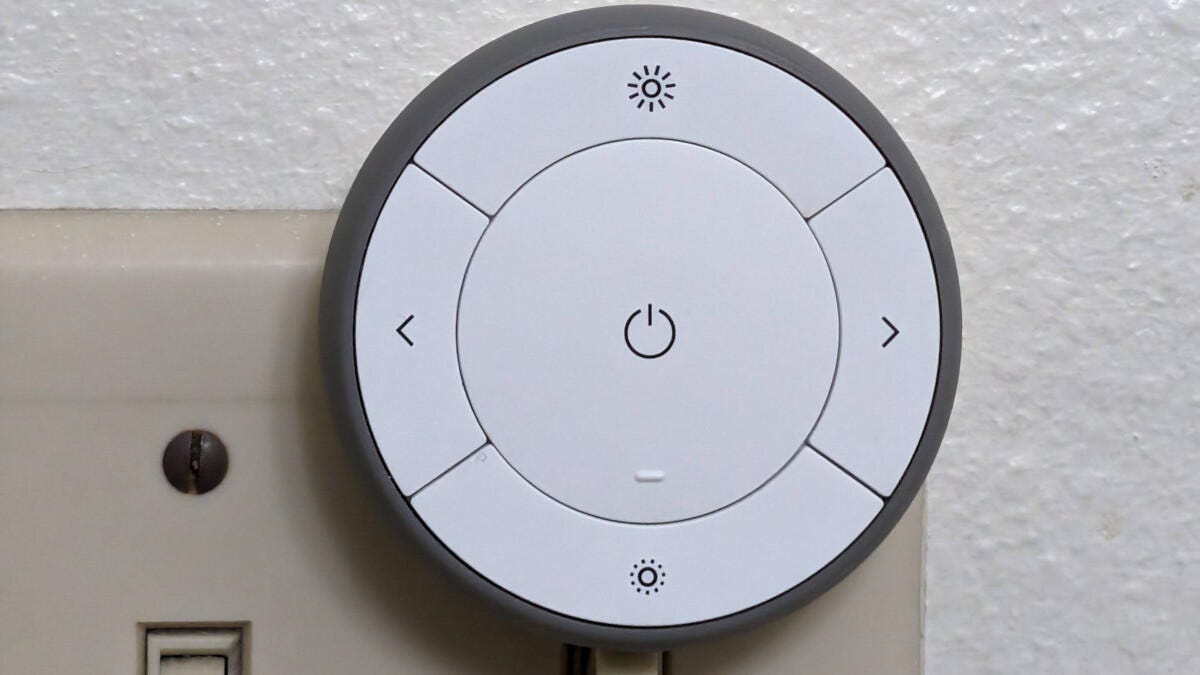
Ikea’s wall remote is clean and simple, in keeping with the brand’s minimalist Scandi aesthetic.
Ikea’s Zigbee connections also help extend battery life on remotes and sensors. Unlike a constant connection to Wi-Fi, Zigbee only communicates with a hub when sending and receiving commands. In other words, Zigbee devices essentially sit on standby until needed. They won’t slowly drain a battery like Wi-Fi or Bluetooth.
Zigbee’s other advantage is smart home compatibility. This means Ikea’s Zigbee devices work with most other smart hubs that support Zigbee: Amazon Echo, SmartThings, Philips Hue and so on.
My favorite smart home remotes
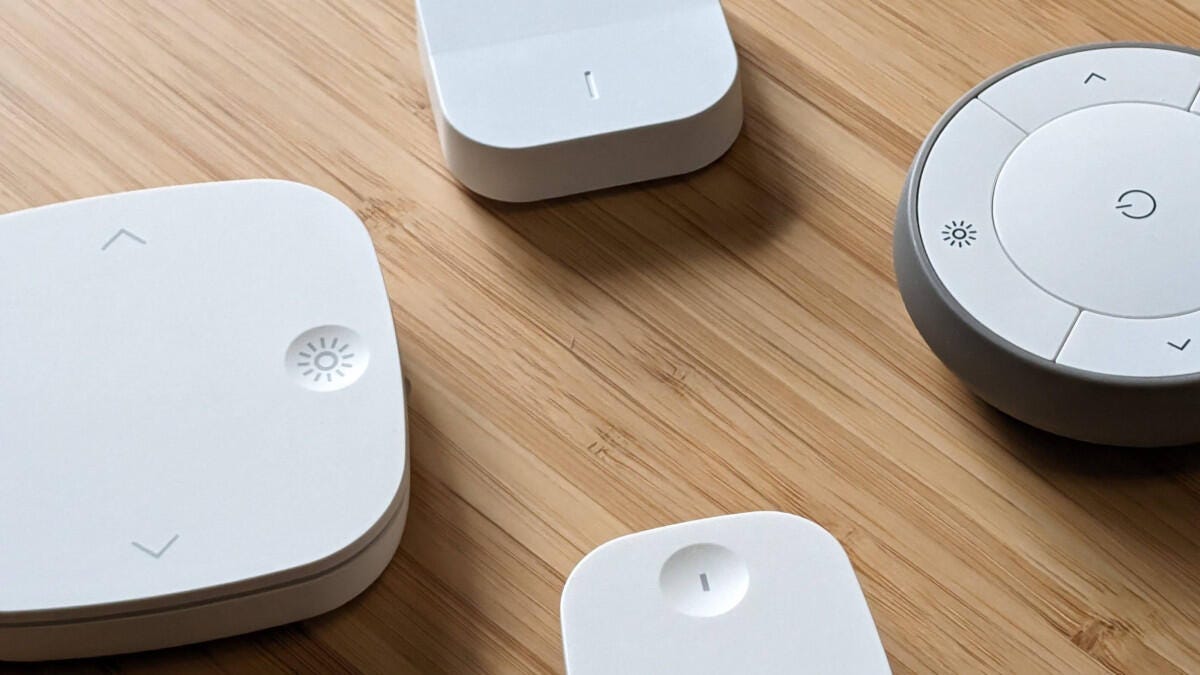
I’ve used Ikea remotes in my smart home for years.
I use Ikea Tradfri remotes with my Samsung SmartThings smart hub, which controls various Zigbee and Wi-Fi devices. As a renter, I don’t want to run afoul of my property manager by swapping out my hardwired light switches, so Ikea’s remotes are an ideal setup for my smart home.
Ikea remotes control my Sengled smart bulbs and Kasa smart plugs with frequent scenes and commands, so I don’t have to find my phone or ask a voice assistant. Plus, remotes are a great option to keep guests from inadvertently flipping off my light switches — schedules and scenes don’t work when a smart bulb is off. I love magnetic mounting plates, which I’ve strategically placed over my light switches. (It’s not the most elegant solution, but at least it’s practical.)
That said, Ikea’s remotes aren’t perfect. The older Tradfri models in my smart home have abysmal battery life due to using a small coin-cell battery. Ikea seems to have learned from this by switching to larger AAA batteries in newer models like the Rodret and Styrbar. AAAs are an excellent upgrade since you can find rechargeable versions and reduce e-waste.
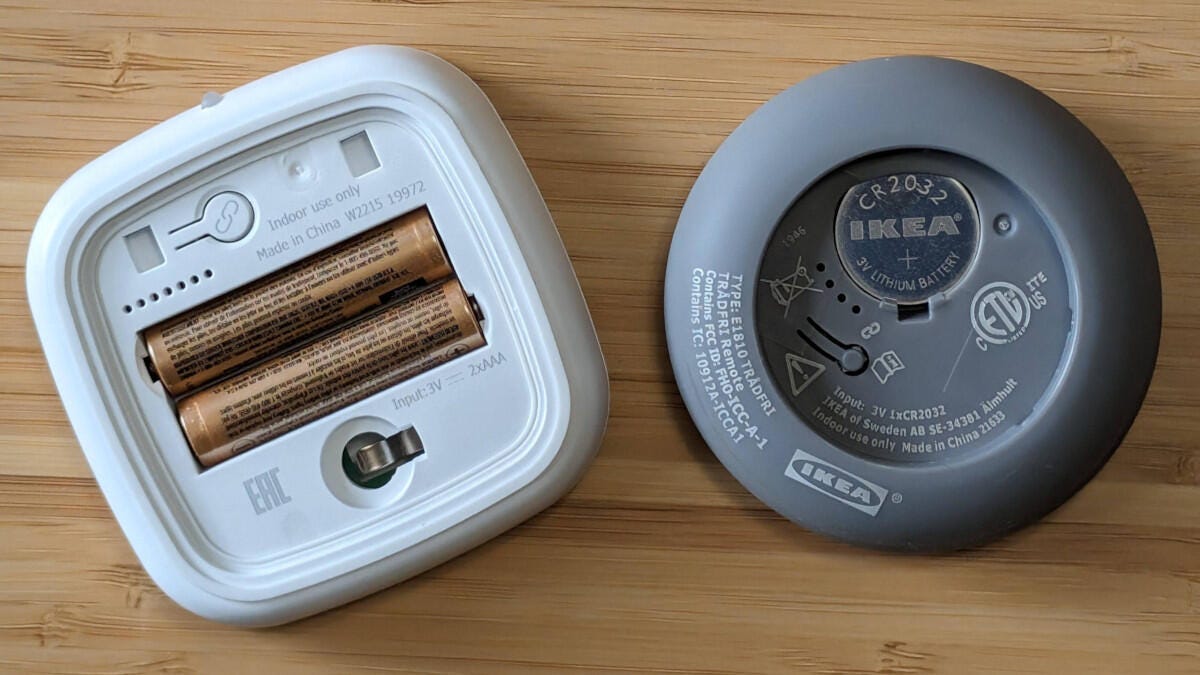
The AAA batteries in Ikea’s newer remotes are a big improvement over coin-cell batteries.
Note that my SmartThings hub doesn’t support the dimming feature on Ikea remotes, and the newer remotes required a bit of behind-the-scenes work on the SmartThings forum to get running. If you want a remote option with less programming, I recommend using the Dirigera hub.
Thankfully, the Dirigera hub supports Amazon Alexa, Apple Home and Google Home — you can easily connect to these smart home setups. There’s also beta support for Matter. I successfully linked Dirigera to SmartThings via Matter — all of my connected Ikea lights were ready to fit into the rest of my system.
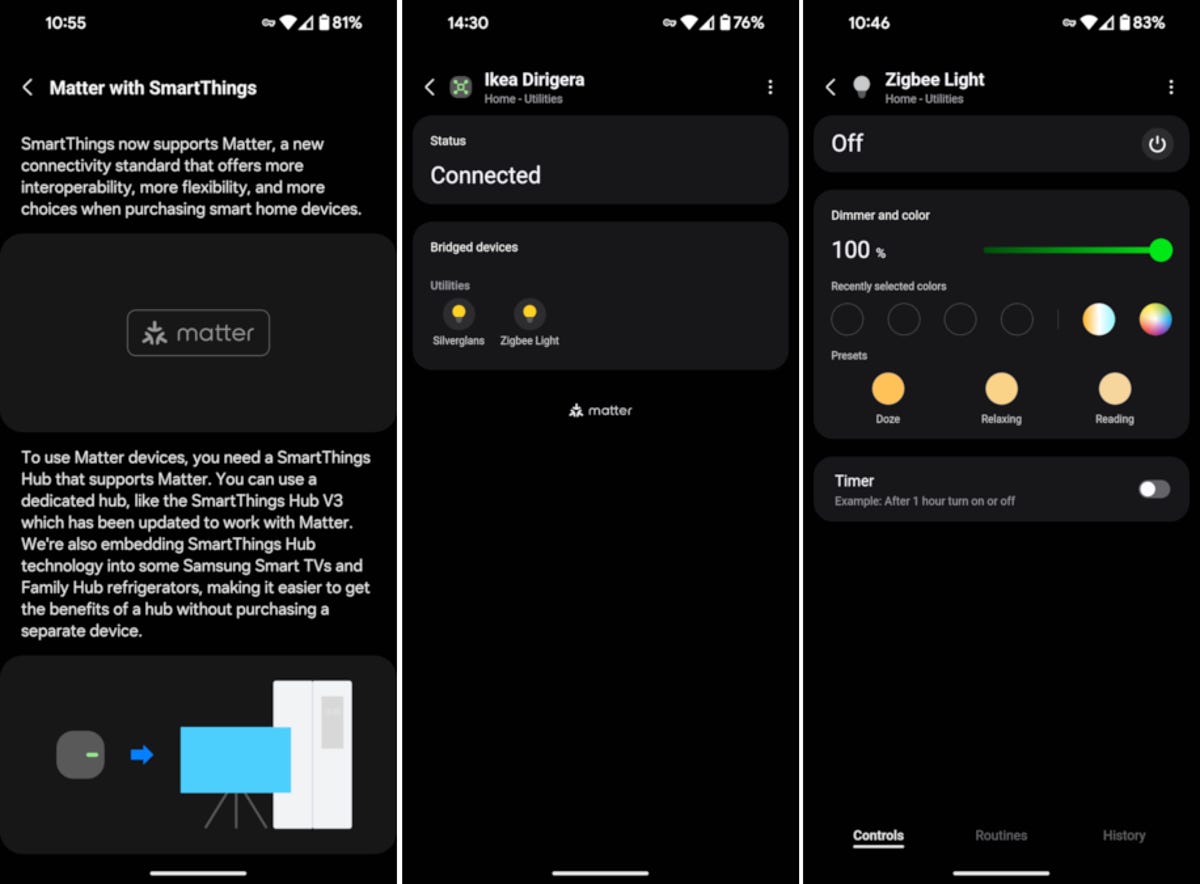
You can link the Dirigera smart hub to other Matter-compatible systems like SmartThings.
Tons of smart lighting variants
As of this writing, Ikea sells over 150 smart lighting options online — most of these are smart lighting kits with various LED light bulbs, fixtures, remotes and accessories. Still, there’s a surprising number of smart bulb options for standard (E26), candelabra (E12) and track lighting (GU10) fixtures. Similarly, many of Ikea’s bespoke lighting fixtures, light panels and lighting strips can connect to the Dirigera hub.
That said, there aren’t as many options for multicolor lights as Philips Hue and other rival brands. Ikea sells plenty of models with adjustable color temperature, which is one feature I use again and again at home: soft white tones for relaxing and daylight tones while I’m working.

Ikea’s smart lighting offerings include various light strips like the Silverglans.
Ikea sells a few other types of smart home devices beyond smart lighting, but the only thing that stands out is the selection of motorized blinds. The biggest limitation with Ikea smart shades is finding the right size for your window, so it’s harder for me to recommend them.
All in all, it’s worth considering Ikea smart lighting products, especially if you’re on a budget. It’s not a perfect solution, but it’s practical enough for most people.




















+ There are no comments
Add yours